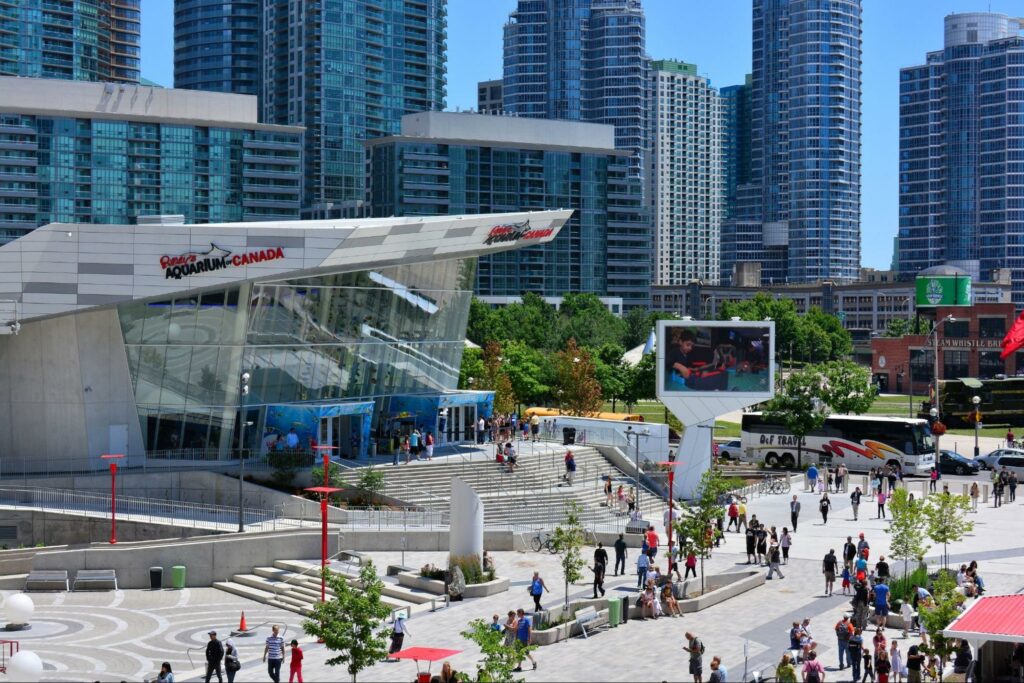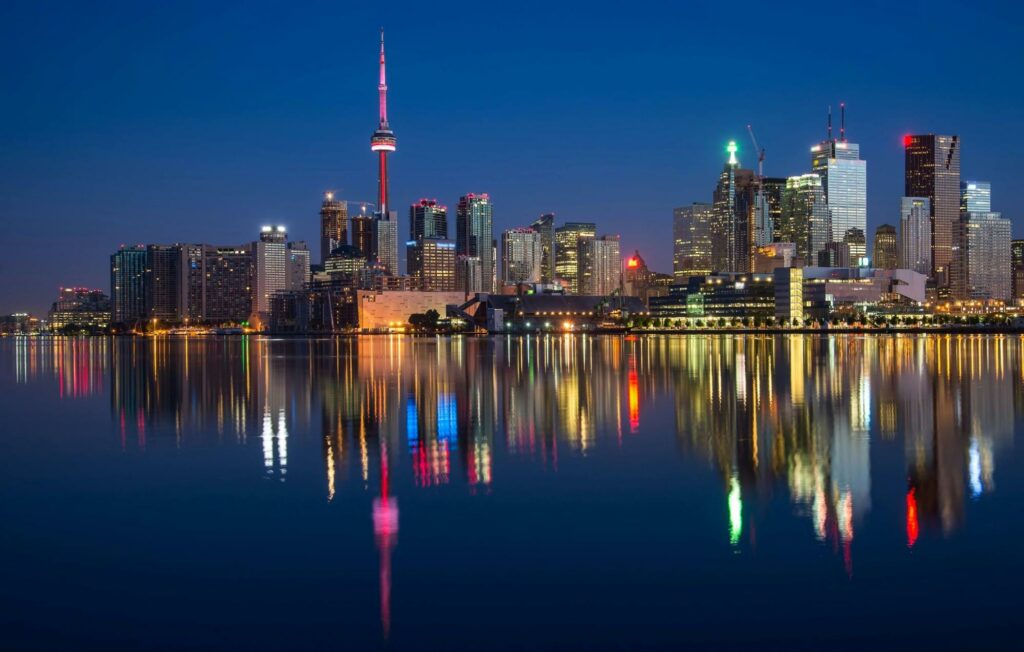It’s not much of a secret that Toronto has a unique energy during the holidays. Streets glow with warm lighting, theatres offer festive performances, and the city’s favourite restaurants welcome those with memorable seasonal meals.
For visitors hoping to enjoy Christmas and Boxing Day without worrying about where to go or what’s open, planning ahead is key, and staying at DelSuites puts you in the heart of the action. Our properties provide you with easy access to top dining, shopping, and attractions.
Luxurious furnished suites make it simple to experience the city while having a comfortable home base to return to after a day of exploring.
Where to Eat During the Holidays
Even on Christmas and Boxing Day, Toronto doesn’t completely shut down — especially in central neighbourhoods near DelSuites. While many independent restaurants will close, a few reliable picks and quick-service places remain accessible, and a handful of grocery and liquor stores open with limited hours.
Here are some food spots that’ll keep you fed:
- Congee Queen: For a comforting, no-fuss meal on Christmas Day, Congee Queen is a classic choice. Many locals report that some branches remain open, serving their signature congee, rice rolls, and other comforting Chinese dishes from 11 a.m. to around 10 p.m., depending on the location.
- Nobu Toronto: If you’re in the mood for something elegant and upscale, Nobu Toronto offers a refined Japanese-Peruvian menu. Their regular hours (5:30 p.m.–9:30 p.m. on weekdays, later on weekends) may apply over the holidays, and their Instagram mentions they’re open for Christmas celebrations — though you should definitely call ahead or make a reservation.
- Drom Taberna: Visit this vibrant bar for a warmer, more festive gathering spot. Drom Taberna comes up in local discussions as being open on Christmas Day. It has a fun, social bar-restaurant vibe, which is great for drinks, food, and enjoying the holiday cheer.
- Mado: This cozy café, known for rich desserts and Turkish-inspired pastries, is also a lovely choice if you’re looking for something sweet or light.
Finding dining options on Christmas and Boxing Day in Toronto can feel like a challenge, but the city offers a variety of restaurants, cafés, and casual spots that welcome holiday visitors.
However, most, if not all, grocery stores in Toronto are open only on December 24th and Boxing Day. Here are your top choices for grocery runs and essentials:
- Select Rabba and Metro locations
- LCBO stores
- The Beer Store
If you need a quick caffeine fix, Tim Hortons and Starbucks, popular spots for coffee and baked goods, keep some locations open on Christmas Day.
Things to Do: Attractions & Entertainment
One of the biggest advantages of staying in a DelSuites property is easy access to Toronto’s top attractions, even during the holidays. Here are some great places to visit, with their usual holiday hours or patterns.
Ripley’s Aquarium of Canada
Located downtown, this world-class aquarium is just a short walk or transit ride away. According to its schedule, the aquarium is open daily from 9:00 a.m. to 9:00 p.m. during the holiday season.
However, during peak holidays like Boxing Day, they sometimes extend hours to 11:00 p.m. for special programming.
Tip: Plan for 2–3 hours to explore the main galleries, touch pools, and the Dangerous Lagoon.
Toronto Zoo
The zoo makes for a great day trip if you’ve got some time and want to get outside. According to its official hours, the zoo is open on December 25 from 11:00 a.m. to 4:00 p.m., and on Boxing Day, from 9:30 a.m. to 4:30 p.m.
Ontario Science Centre
At the Ontario Science Centre, you’re in for a hands-on experience, and it’s especially good for families. However, it’s closed on Christmas Day but open on Boxing Day from approximately 10:00 a.m. to 5:00 p.m.
Expect interactive exhibits, live demonstrations, and IMAX screenings that are perfect for a winter afternoon.
Canada’s Wonderland (Winterfest)
The park typically closes on Christmas Day but reopens on Boxing Day around 3 p.m. for its Winterfest celebrations. The good news is that it runs from November 15, 2025, to January 3, 2026. This means lights, winter-themed entertainment, and fewer crowds in the evening—a festive way to spend Boxing Day.
Skating at Nathan Phillips Square
If you’re up for something free and seasonal, many city-run outdoor skating rinks, including Nathan Phillips Square, are open daily during the holidays from 10 a.m. to 10 p.m.
Skating under the lights in downtown Toronto brings its own kind of magic and is highly accessible from a central DelSuites suite.
Why DelSuites Is the Perfect Base for Holiday Stay
Staying with DelSuites over the Christmas and Boxing Day period offers something many hotels don’t: fully furnished, apartment-style comfort in top neighbourhoods, with easy access to key parts of the city.
- Prime locations: DelSuites properties are within walking or biking distance of major attractions like Ripley’s Aquarium, the CN Tower, theatres, and more. This means fewer transit trips and more time enjoying the city.
- Comfort of home: Instead of a cramped hotel room, you’ll get a spacious suite with a kitchen, living area, and potentially a balcony.
- Service and amenities: DelSuites offers professional maintenance and recreational facilities. Whether you’re looking to have a gym session in the morning or help with taxi services, our team can support you with that.
- Transport-friendly: With great walk, bike, and transit scores in DelSuites’ residential communities, you can minimize the holiday rush. TTC lines operate on a holiday schedule, and many of the attractions above open early.
Start Your Holiday in Toronto with DelSuites
Christmas and Boxing Day are special times to explore Toronto, with festive meals, iconic attractions, and unique experiences waiting just steps from your door. Kick off your holiday in style with luxurious accommodations at DelSuites, offering a central, comfortable, and convenient base for your celebrations.
Roam the city, enjoy the sights, and return to a suite where every detail has been considered for a perfect stay.
Ready to make your holiday stay in Toronto special? Book a DelSuites suite and enjoy your December in style.


















